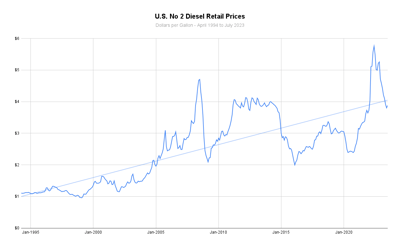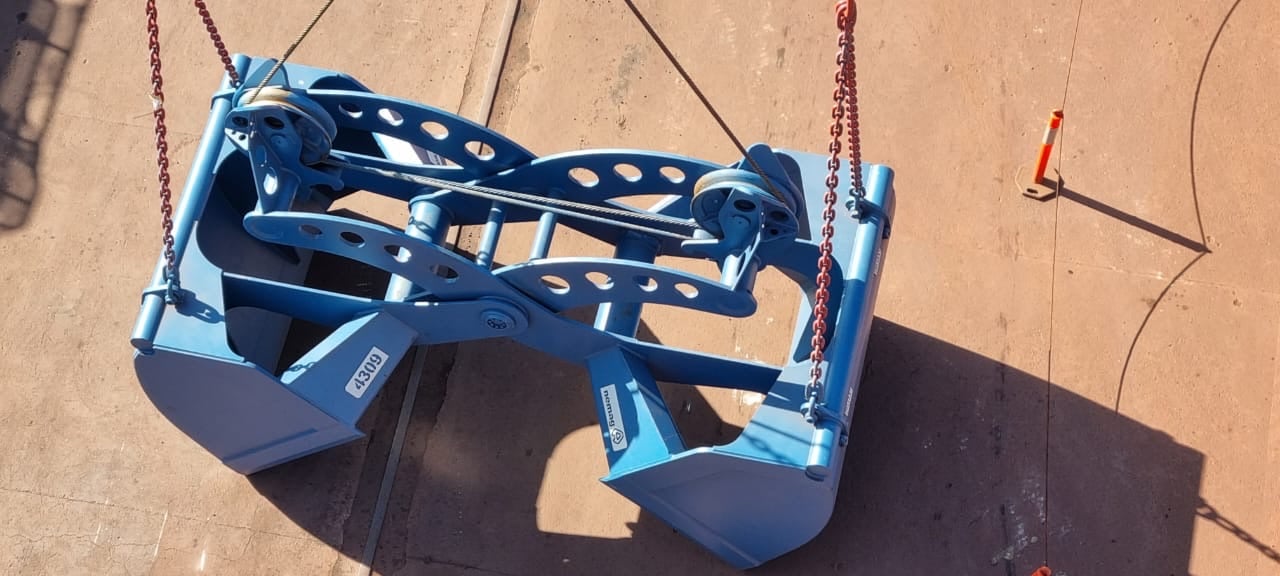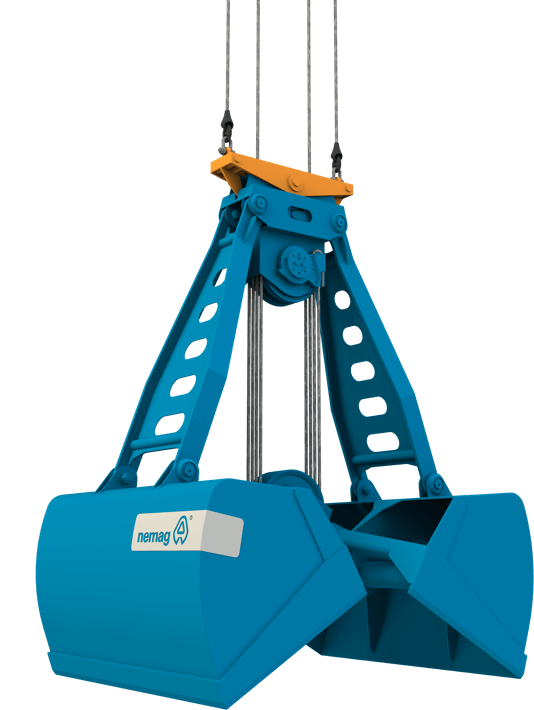As fuel prices soar due to global events like the COVID pandemic and the Ukraine war, the dry bulk industry faces new challenges. This article dives into the effects of rising energy costs and highlights innovative solutions to stay ahead in this changing landscape.
Discover the three key strategies to enhance your productivity and soften the strain of your surging fuel spendings.
Rise of fuel costs 2023
 Gas and coal prices have jumped to all-time highs in the COVID period and at the start of the war in Ukraine. In June 2022, the price of a gallon U.S. No 2 Diesel skyrocketed to an astonishing $5.75, based on the U.S. Energy Information Administration data.
Gas and coal prices have jumped to all-time highs in the COVID period and at the start of the war in Ukraine. In June 2022, the price of a gallon U.S. No 2 Diesel skyrocketed to an astonishing $5.75, based on the U.S. Energy Information Administration data.
On a larger scale, from a 30-year perspective, the price per gallon has almost quadrupled from $1.10 in April 1994 to $3.88 in July 2023.
Impact of rising fuel costs on the dry bulk industry
Rising fuel costs have tangible repercussions for the dry bulk industry. As fuel accounts for a significant portion of operational expenses, increased costs inevitably affect freight rates.
To counter these rising costs, many carriers are adopting "slow steaming," reducing vessel speeds to conserve fuel. This strategy decreases fuel consumption but results in longer transit times, possibly affecting supply chain schedules. Prolonged transit times not only disrupt the supply chain but could also result in increased demurrage costs if ships are held up at ports due to these extended delivery windows.
Port logistics and harbor operations
Higher fuel costs are prompting ports to enhance efficiency. They're expediting ship turnarounds, improving planning, and maximizing equipment use. Even though electricity prices often correlate with oil prices, there's growing interest in electric tools like harbor cranes. They might be more economical in the long run and are less sensitive to fuel price fluctuations. However, services like docking and boat assistance might become costlier due to these fuel price hikes.
Transshipment hubs, pivotal points where cargo transfers from one ship to another, are acutely affected by fluctuating fuel prices. These price surges amplify operational expenses, encompassing added handling, equipment utilization, and idle times. In response, shipping companies may opt for more cost-effective locations or reduce their reliance on transshipments. Proactively, some hubs stockpile fuel during cheaper periods, hedging against potential price increases and guaranteeing operational consistency.
3 Strategies to increase your dry bulk productivity
The first strategy is straightforward: streamline your operations. Ensure everyone at the port knows ship schedules to optimize resource allocation, like crane operators and bulldozers. Consider a 24/7 schedule with rotating crane operators or utilize software tools for efficient planning and resource management. This can reduce downtime and boost port productivity.
Regular maintenance and availability of equipment
The second strategy emphasizes regular maintenance checks to prevent unplanned repairs. Unforeseen breakdowns are never convenient. Regularly check your crane and grabs. For advice on structural maintenance tasks like greasing or part replacement you can consult your operation and maintenance manual or contact your account manager.
In addition, you should consider supplying back up parts that you will need inevitably. A steel cable might cost you $2,500, but it will cost you a multitude more if your whole production is down. That's why some clients invest in multiple grabs next to spare parts. It ensures continuous operations even if one grab needs maintenance or replacement, promoting overall productivity.

Investing in high-efficiency grabs
The third and most influential strategy is using the ideal crane and grab combination. Factors like your crane type, material, and handling volume determine the best grab bucket. For example, digging dry bauxite instead of wet bauxite will require more penetration to achieve the same grab fill rate. But a heavier grab will also increase your cycle times. If you do the calculations, then increasing or decreasing seconds on every cycle can benefit, or cost, you six figures annually.
Nemag, in association with the Technical University of Delft, has developed the Nemax grab, optimizing productivity. Some clients have seen a 20% productivity boost from this innovative grab. Users also report lower ownership costs, decreased maintenance, and safer working conditions. A lighter and more efficient grab not only saves on its own energy consumption but also reduces energy needs for other equipment like cranes, bulldozers and conveyor belts.
Energy costs are among the terminal's biggest expenses. With a more innovative grab, you can realize significant savings in this area. Both the clamshell and NemaX are highly productive grabs that consume substantially less power per ton material transferred, leading to an even higher ROI. Here’s an article with a clear comparison between the NemaX and a clamshell grab.

Unloading a ship in four days instead of five
VLI Pecem maximized their productivity by 20% through the optimal pairing of grab and crane. They did extensive research to increase their port’s productivity. But bought THREE different grabs to finally unlock this performance.
"To achieve the highest productivity, we needed to look for a high-quality grab solution that enabled us to use the cranes at their full capacity.”
Their journey resulted in inspiring outcomes:
- A 20% surge in productivity, enabling unloading a ship in four days rather than five.
- Reduced maintenance costs and considerable demurrage costs savings
- A happy team that enjoy their work
Do you want to boost your productivity?
Download the case study or schedule a meeting at Breakbulk Americas 26 - 28 September to explore your business opportunities, unlock new productivity levels and reduce the impact of rising energy costs.




